 We rely on the natural environment as a source of food and raw materials, for recreation and health and as a dump for waste. Yet, too often, little or no monetary value is placed on the environment. GDP, the standard measure of economic success, is based on market values; and the market undervalues the environment. The prices of the goods we buy bear little relationship with the environmental costs of their production. And yet we all bear the costs (some more than others) as the planet warms, as rain forests are cut down, as seas become polluted and as biodiversity is destroyed.
We rely on the natural environment as a source of food and raw materials, for recreation and health and as a dump for waste. Yet, too often, little or no monetary value is placed on the environment. GDP, the standard measure of economic success, is based on market values; and the market undervalues the environment. The prices of the goods we buy bear little relationship with the environmental costs of their production. And yet we all bear the costs (some more than others) as the planet warms, as rain forests are cut down, as seas become polluted and as biodiversity is destroyed.
A major study commissioned by the UK government has just been published. The Economics of Biodiversity: The Dasgupta Review looks at how we need to rethink the value we attach to nature and embed that within economic decisions. As the Review begins by saying, ‘We are part of Nature, not separate from it’. Nature is an asset on which we all depend and yet is is hugely undervalued. The Amazon rainforest is seen by developers as valuable only for clearance for cattle, soy or mining. In these terms, Amazon the company, valued at over US$1 trillion, is worth more than the Amazon rainforest. As page 2 of the Headline Messages states:
Nature’s worth to society – the true value of the various goods and services it provides – is not reflected in market prices because much of it is open to all at no monetary charge. These pricing distortions have led us to invest relatively more in other assets, such as produced capital, and underinvest in our natural assets.
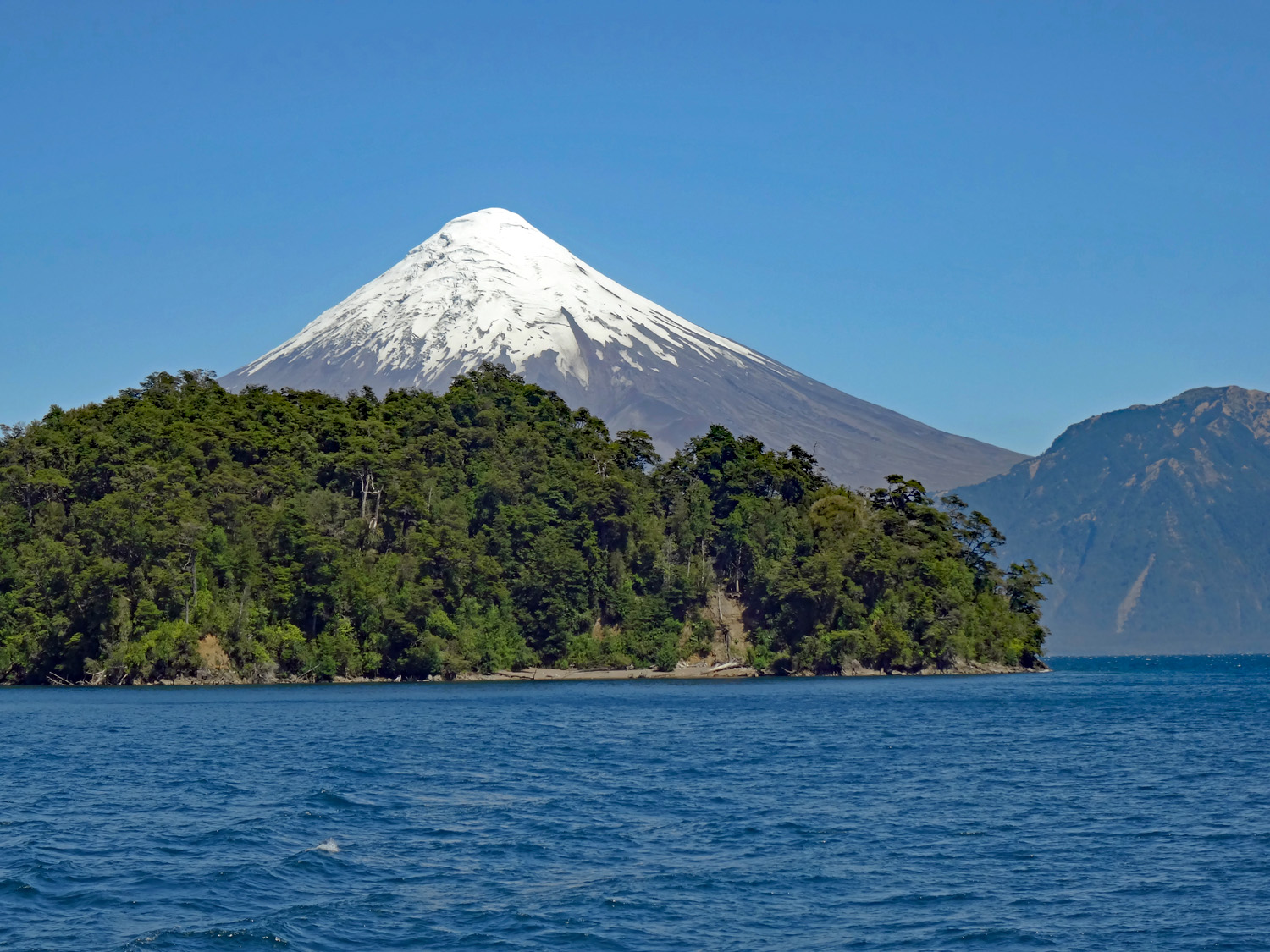 Moreover, aspects of Nature are mobile; some are invisible, such as in the soils; and many are silent. These features mean that the effects of many of our actions on ourselves and others – including our descendants – are hard to trace and go unaccounted for, giving rise to widespread ‘externalities’ and making it hard for markets to function well.
Moreover, aspects of Nature are mobile; some are invisible, such as in the soils; and many are silent. These features mean that the effects of many of our actions on ourselves and others – including our descendants – are hard to trace and go unaccounted for, giving rise to widespread ‘externalities’ and making it hard for markets to function well.
But this is not simply a market failure: it is a broader institutional failure too. Many of our institutions have proved unfit to manage the externalities. Governments almost everywhere exacerbate the problem by paying people more to exploit Nature than to protect it, and to prioritise unsustainable economic activities. A conservative estimate of the total cost globally of subsidies that damage Nature is around US$4 to 6 trillion per year. And we lack the institutional arrangements needed to protect global public goods, such as the ocean or the world’s rainforests.
The Review urges a complete rethinking of environmental value. We need to recognise that we are embedded in Nature and that biodiversity has intrinsic worth – perhaps even moral worth. Only this way can correct economic decisions be made.
To detach Nature from economic reasoning is to imply that we consider ourselves to be external to Nature. The fault is not in economics; it lies in the way we have chosen to practise it.
Policy recommendations
The Review highlights some specific policies that can be adopted to attach value to the environment. It makes three major recommendations.
- Ensure that our demands on Nature do not exceed its supply, and that we increase Nature’s supply relative to its current level. This involves countries and their citizens accepting that they are stewards of the land, seas and atmosphere. This means making conservation central to decision making in areas such a food production, raw material extraction, energy generation and recycling. A range of policy instruments can be used, including taxes and subsidies, laws and regulations, public investment and provision of services.
 Change our measures of economic success to guide us on a more sustainable path. This would involve amending measures, such as GDP, to include environmental degradation (-ve) and improvement (+ve) and national wealth to include all natural assets, such as biodiversity and land, air, sea and water quality. This would involve ‘natural capital accounting’. This, in turn, would be helped by global standardised presentation of data and modelling approaches, and the provision of data on the environment by statistical agencies.
Change our measures of economic success to guide us on a more sustainable path. This would involve amending measures, such as GDP, to include environmental degradation (-ve) and improvement (+ve) and national wealth to include all natural assets, such as biodiversity and land, air, sea and water quality. This would involve ‘natural capital accounting’. This, in turn, would be helped by global standardised presentation of data and modelling approaches, and the provision of data on the environment by statistical agencies.
- Transform our institutions and systems – in particular our finance and education systems – to enable these changes and sustain them for future generations. Institutional arrangements should be put into place that allow the pooling of environmental information at local, national and global levels. Then there will need to be international subsidies to countries with environments that should be protected for the global good (e.g. rainforests) and international charges for the use of global common resources, such as oceans and the atmosphere. ‘What is ultimately required is a set of global standards underpinned by credible, decision-grade data, which businesses and financial institutions can use to fully integrate Nature-related considerations into their decision-making, and assess and disclose their use of, and impact on, Nature.’ But this must also be backed up by education so as to encourage people to be more conservationist in their behaviour and attitudes.
It is hoped that the Review will be a major focus of two upcoming United Nations conferences: on Biological Diversity (COP15) in Kunming, China in May 2021 and on Climate Change (COP26) in Glasgow in November 2021. The authors of the Review hope that these conferences will set new environmental commitments and establish the necessary institutional arrangements to ensure such commitments are met. This will involve changing the approach to economic decision making at all levels in society.
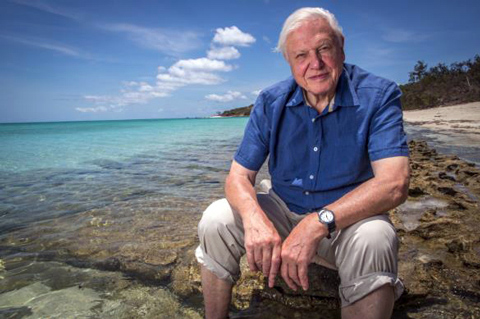 As Sir David Attenborough states in his foreword to the Review,
As Sir David Attenborough states in his foreword to the Review,
Economics is a discipline that shapes decisions of the utmost consequence, and so matters to us all. The Dasgupta Review at last puts biodiversity at its core and provides the compass that we urgently need. In doing so, it shows us how, by bringing economics and ecology together, we can help save the natural world at what may be the last minute – and in doing so, save ourselves.
Articles
The Dasgupta Review
Questions
- To what extent is the Dasgupta Review an updated version of the Stern Review of 2006?
- Draw a diagram to illustrate how the existence of negative externalities will lead to production levels above the social optimum.
- To what extent is Nature a public good?
- What is meant by the ‘tragedy of the commons’? How is it relevant to the exploitation of Nature?
- How could market incentives be changed by governments so as to halt the loss of biodiversity?
- Following an international agreement to protect the natural environment, what sanctions could be imposed on countries or companies which violate the agreement? How effective would they be?
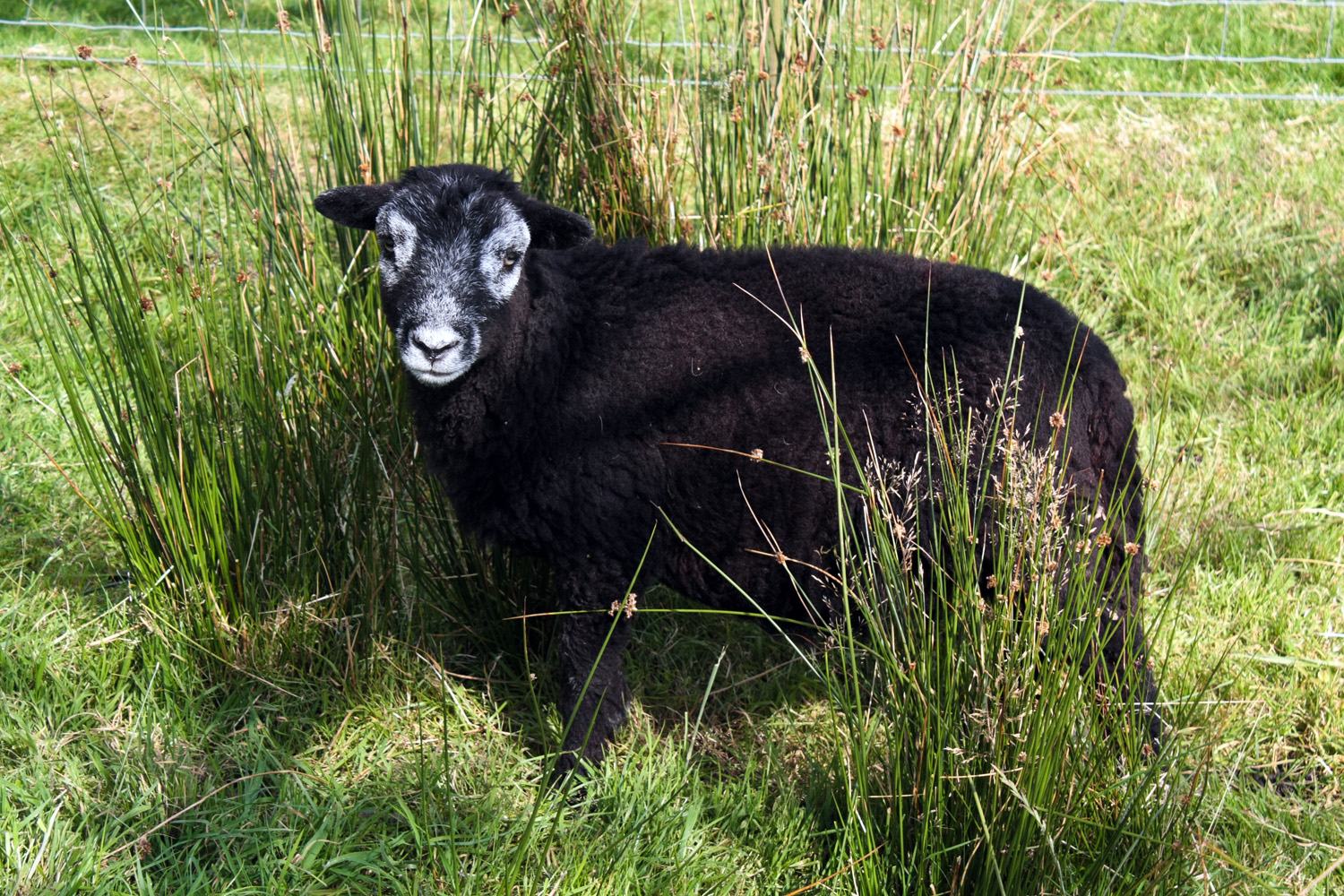 Each week, BBC Radio 4 broadcasts readings from a book serialised in five 15-minute episodes. In the week beginning 18 January 2021, the readings were from English Pastoral: An Inheritance by James Rebanks, a farmer from the Cumbrian fells. His farm is relatively small, covering 185 acres.
Each week, BBC Radio 4 broadcasts readings from a book serialised in five 15-minute episodes. In the week beginning 18 January 2021, the readings were from English Pastoral: An Inheritance by James Rebanks, a farmer from the Cumbrian fells. His farm is relatively small, covering 185 acres.
He has attempted to make it much more sustainable and less intensive, reintroducing traditional Herdwick sheep, having a mixture of cows and sheep rather than just sheep, a greater sub-division of fields, and more natural scrubland, peatbogs and trees. As a result, soil quality has improved and there has been an explosion of biodiversity, with an abundance of wild flowers and insects.
Apart from being an autobiography of his time as a farmer and his attempt to move towards more traditional methods, the book examines broader issues of agricultural sustainability. It looks at the pressures of consumers wanting cheap food, the market power of supermarkets and wholesalers, the cost pressures on farmers pushing them towards monoculture to achieve economies of scale, and the role of the agrichemicals industry promoting fertilisers, feeds and pesticides which bring short-term financial gains to farmers, but which cause longer-term damage to the land and to biodiversity.
Rebanks has gained quite a lot of media attention after the publication of his first book, The Shepherd’s Life, including being one of the guests on Desert Island Discs and the subject of an episode of The Food Programme.
Listen to the Food Programme podcast and try answering the questions, which are all based on the podcast in the order of the points made in the interview.
Podcast
Reviews
Questions
- What are the incentives of an unregulated market for food that result in monoculture and a loss of biodiversity?
- To what extent are consumers responsible for changes in farming methods?
- Have the changes helped the urban poor?
- How is the monopsony power of supermarkets and food wholesalers impacting on food production and the pattern of agriculture?
- There are various (private) economies of scale in food production, but these often involve substantial external costs and long-term private costs too. How does this impact on land use?
- What are some of the limits of technology in increasing crop, meat and dairy yields?
- Will more recent changes in the pattern of food consumption help to increase mixed farming and biodiversity?
- Is it ‘rational’ for many farmers to continue with intensive farming with high levels of artificial fertilisers and pesticides?
- Is diversity in farming across farms within a local area a public good? If so, how could such diversity be achieved?
- How can farmers be encouraged to think and act holistically?
- Is there a trade-off between food output and biodiversity?
- What are the dangers in the UK reaching an agricultural trade deal with the USA?
- What are the benefits and costs of encouraging local food markets?
 At the annual World Economic Forum (WEF) in Davos, Switzerland, world political and business leaders are meeting to discuss pressing economic issues of the day. This year, one of the key themes is climate change and “how to save the planet”.
At the annual World Economic Forum (WEF) in Davos, Switzerland, world political and business leaders are meeting to discuss pressing economic issues of the day. This year, one of the key themes is climate change and “how to save the planet”.
The approaches of leaders to the climate crisis, however, differ enormously. At the one extreme there are those who deny that emissions have caused climate change, or who reluctantly acknowledge climate change but think that governments need to do nothing and that technological advances in green energy and transport will be sufficient to curb global warming. This has been the approach of President Trump, President Bolsonaro of Brazil and Prime Minister Scott Morrison of Australia. They may claim to support the general goals of reducing greenhouse gases, but are keen to protect their coal and oil industries and, in the case of Brazil, to continue cutting down the Amazon rain forest to support mining, ranching and the growing of crops.
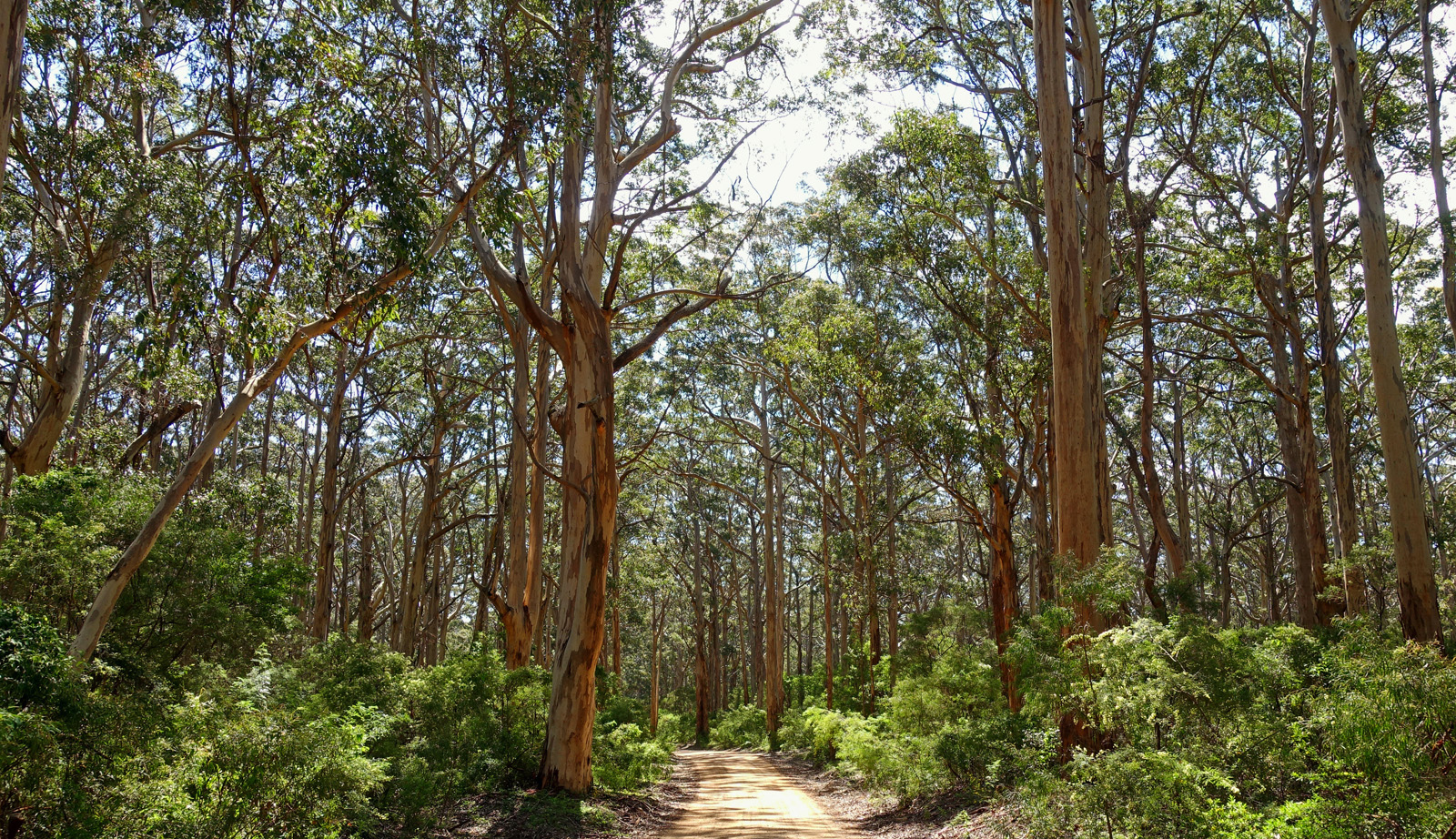 At his speech at the WEF, President Trump said that he supported the initiative to plant one trillion trees worldwide to act as a carbon sink. However, he gave no details of just what the nature of the support would be. Would there be subsidies or tax breaks, for example, for landowners to plant trees? In the meantime, his administration has relaxed regulations to curb air and water pollution. And he has withdrawn the USA from the Paris climate agreement.
At his speech at the WEF, President Trump said that he supported the initiative to plant one trillion trees worldwide to act as a carbon sink. However, he gave no details of just what the nature of the support would be. Would there be subsidies or tax breaks, for example, for landowners to plant trees? In the meantime, his administration has relaxed regulations to curb air and water pollution. And he has withdrawn the USA from the Paris climate agreement.
Other leaders, urged on by activists, such as Greta Thunberg, have talked about tougher action to tackle emissions. Countries such as Canada, Norway and the EU countries have adopted a number of initiatives. Policies range from taxing emissions, capping/regulating emissions with penalities for those breaching the limits, tradable permits, subsidising green alternatives, setting local emissions targets with incentives for meeting them, investing in green infrastructure such as roadside charging points for electric vehicles, making environmental education part of a national curriculum, investing in public transport, and so on. But, say, activists, only large-scale measures that truly recognise the scale of the climate emergency will be sufficient.
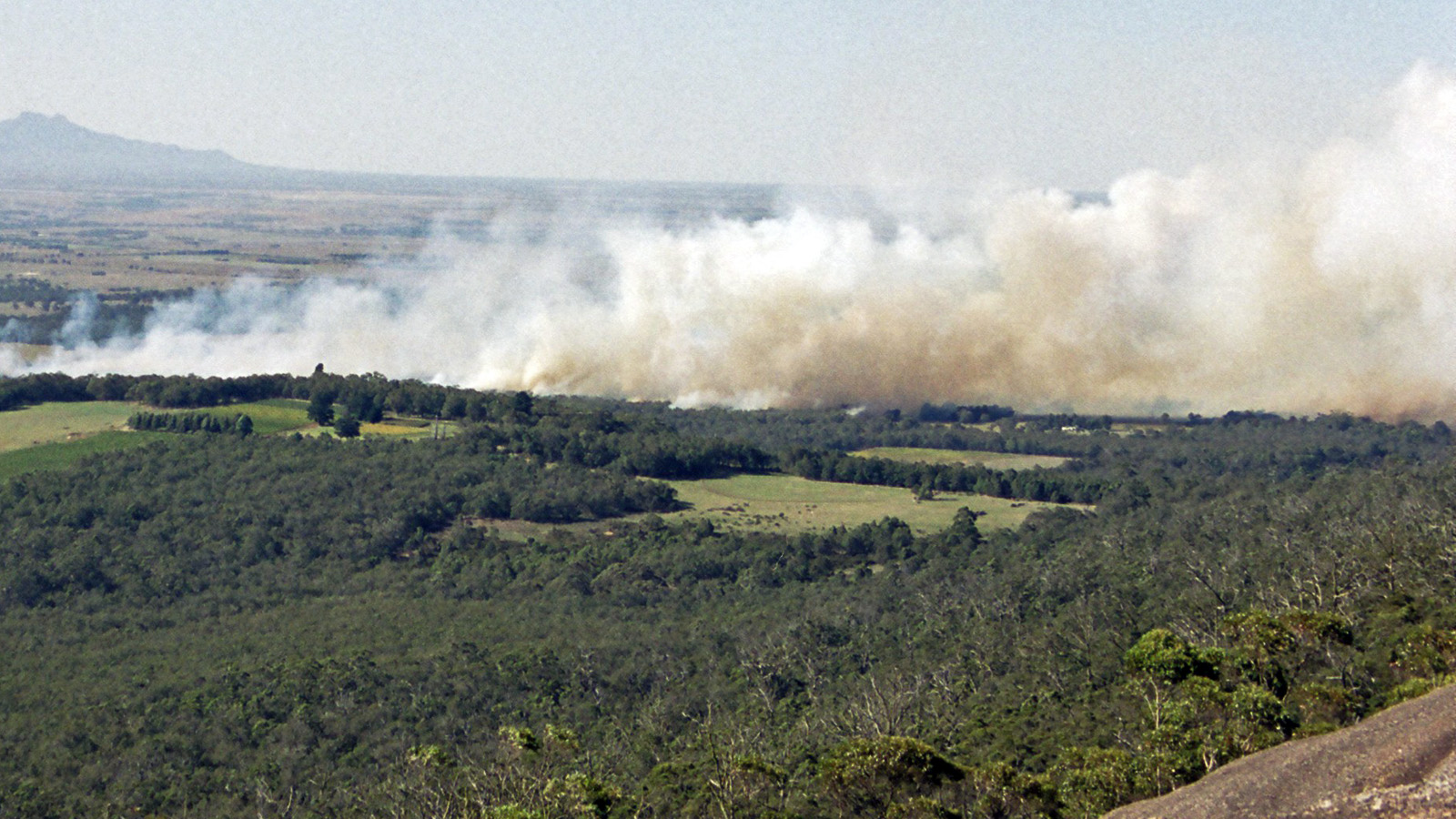 The year starts with climate being addressed at Davos; it ends with the annual Conference of the Parties (COP26) to the United Nations Framework Convention on Climate Change (UNFCCC). This year it will be in Glasgow. There is much hope pinned on this conference, given the growing realisation of the effects of climate change, from bush fires in Australia, to floods in Indonesia and other parts of southeast Asia, to more extreme hurricanes/typhoons, to rapidly melting glaciers and retreating sea ice, to rising sea levels, to crop failures and the displacement of humans and the destruction of wildlife and habitat.
The year starts with climate being addressed at Davos; it ends with the annual Conference of the Parties (COP26) to the United Nations Framework Convention on Climate Change (UNFCCC). This year it will be in Glasgow. There is much hope pinned on this conference, given the growing realisation of the effects of climate change, from bush fires in Australia, to floods in Indonesia and other parts of southeast Asia, to more extreme hurricanes/typhoons, to rapidly melting glaciers and retreating sea ice, to rising sea levels, to crop failures and the displacement of humans and the destruction of wildlife and habitat.
COP25 in Madrid made little progress; it is hoped that COP26 will be much more successful. Sir David Attenborough has warned that the world faces a ‘climate crisis moment’. He hopes that the world will be ready to take much stronger action at COP26.
 But there remains the fundamental economic problem of the tragedy of the commons. As long as the atmosphere and other parts of the environment are free to ‘use’ to pollute, and as long as the costs of doing so are borne largely by people other than the direct polluters, the market will fail to provide a solution. Australia’s bush fires can be directly attributed to climate change and climate change is exacerbated by coal-fired power stations. But Australia’s use of coal as a power source is only a tiny contributor to global climate change. Presumably, the Australian government would rather get a ‘free ride’ off other countries’ policies to cut emissions rather than bearing the economic cost of reducing coal-fired generation itself for little gain in terms of reduced global emissions.
But there remains the fundamental economic problem of the tragedy of the commons. As long as the atmosphere and other parts of the environment are free to ‘use’ to pollute, and as long as the costs of doing so are borne largely by people other than the direct polluters, the market will fail to provide a solution. Australia’s bush fires can be directly attributed to climate change and climate change is exacerbated by coal-fired power stations. But Australia’s use of coal as a power source is only a tiny contributor to global climate change. Presumably, the Australian government would rather get a ‘free ride’ off other countries’ policies to cut emissions rather than bearing the economic cost of reducing coal-fired generation itself for little gain in terms of reduced global emissions.
However, people are not entirely selfish. Many are willing to make personal sacrifices to lead a more environmentally sustainable life. Many people, for example, are choosing electricity tariffs that are slightly higher but where the electricity is generated with zero carbon emissions. Firms have shown a readiness to respond to demands from their consumers for more sustainable products.
Articles
- Five essential steps to take right now to tackle climate change
World Economic Forum, Robin Pomeroy (17/1/20)
- Davos: Trump decries climate ‘prophets of doom’ with Thunberg in audience
BBC News (21/1/20)
- Greta Thunberg clashes with US treasury secretary in Davos
The Guardian, Graeme Wearden (23/1/20)
- Australia, your country is burning – dangerous climate change is here with you now
The Conversation, Michael E Mann (10/1/20)
- Climate change: What different countries are doing around the globe to tackle the crisis
Independent, Zoe Tidman (20/9/19)
- How we can combat climate change
Washington Post (2/1/19)
- Sir David Attenborough warns of climate ‘crisis moment’
BBC News, David Shukman (16/1/20)
- Climate change: Where we are in seven charts and what you can do to help
BBC News (14/1/20)
- Ten facts about the economics of climate change and climate policy
Brookings, Ryan Nunn, Jimmy O’Donnell, Jay Shambaugh, Lawrence H. Goulder, Charles D Kolstad and Xianling Long (23/10/19)
- The Federal Reserve Considers the Economics of Climate Change in 2020
Lawfare, Rachel Westrate (16/1/20)
- Bernie Sanders’ economic adviser says Australia’s bushfires are a climate change ‘wake-up call’
The Guardian, Ben Butler (7/1/20)
- Carbon pricing: What the research says
Journalist’s Resource, Harvard Kennedy School’s Shorenstein Center, Clark Merrefield (17/1/20)
- European Parliament backs Green Deal
Resource Media, Imogen Benson (17/1/20)
- Tackling climate change
Committee on Climate change
- Tragedy of the Commons: A Drama That Our Planet Is Not Enjoying
Felix, Xiuchen Xu (9/12/19)
Questions
- Draw a diagram to show how the external costs of carbon emissions cause a more than socially optimal output of products emitting CO2.
- What is meant by the ‘tragedy of the commons’? Give some environmental examples.
- Discuss possible solutions to the tragedy of the commons.
- Why was COP25 generally regarded as a failure?
- Identify four possible policies that governments could adopt to reduce carbon emissions and discuss their relative advantages and disadvantages.
- Are meetings such as the annual World Economic Forum meetings at Davos of any benefit other than to the politicians attending? Explain.
 There is increasing recognition that the world is facing a climate emergency. Concerns are growing about the damaging effects of global warming on weather patterns, with increasing droughts, forest fires, floods and hurricanes. Ice sheets are melting and glaciers retreating, with consequent rising sea levels. Habitats and livelihoods are being destroyed. And many of the effects seem to be occurring more rapidly than had previously been expected.
There is increasing recognition that the world is facing a climate emergency. Concerns are growing about the damaging effects of global warming on weather patterns, with increasing droughts, forest fires, floods and hurricanes. Ice sheets are melting and glaciers retreating, with consequent rising sea levels. Habitats and livelihoods are being destroyed. And many of the effects seem to be occurring more rapidly than had previously been expected.
Extinction Rebellion has staged protests in many countries; the period from 20 to 27 September saw a worldwide climate strike (see also), with millions of people marching and children leaving school to protest; a Climate Action Summit took place at the United Nations, with a rousing speech by Greta Thunberg, the 16 year-old Swedish activist; the UN’s Intergovernmental Panel on Climate Change (IPCC) has just released a report with evidence showing that the melting of ice sheets and rising sea levels is more rapid than previously thought; at its annual party conference in Brighton, the Labour Party pledged that, in government, it would bring forward the UK’s target for zero net carbon emissions from 2050 to 2030.
Increasingly attention is focusing on what can be done. At first sight, it might seem as if the answer lies solely with climate scientists, environmentalists, technologists, politicians and industry. When the matter is discussed in the media, it is often the environment correspondent, the science correspondent, the political correspondent or the business correspondent who reports on developments in policy. But economics has an absolutely central role to play in both the analysis of the problem and in examining the effectiveness of alternative solutions.
One of the key things that economists do is to examine incentives and how they impact on human behaviour. Indeed, understanding the design and effectiveness of incentives is one of the 15 Threshold Concepts we identify in the Sloman books.
One of the most influential studies of the impact of climate change and means of addressing it was the study back in 2006, The Economics of Climate Change: The Stern Review, led by the economist Sir Nicholas Stern. The Review reflected economists’ arguments that climate change represents a massive failure of markets and of governments too. Firms and individuals can emit greenhouse gases into the atmosphere at no charge to themselves, even though it imposes costs on others. These external costs are possible because the atmosphere is a public good, which is free to exploit.
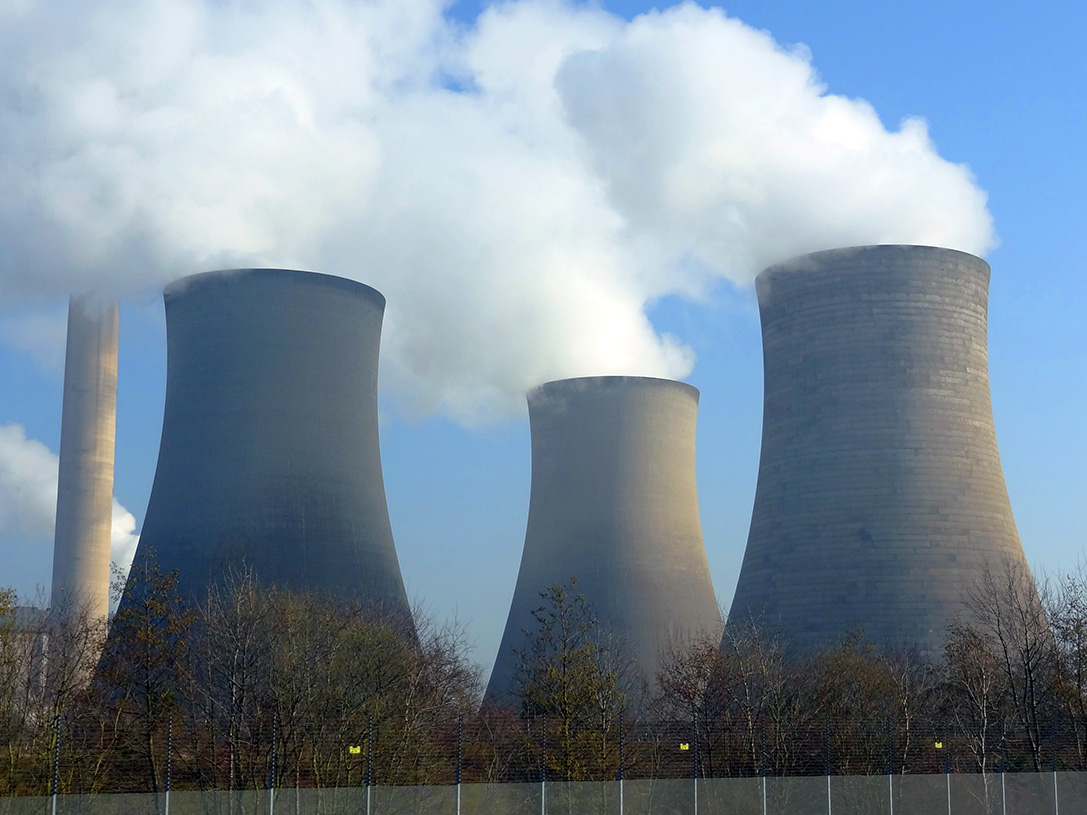 Part of the solution is to ‘internalise’ these externalities by imposing charges on people and firms for their emissions, such as imposing higher taxes on cars with high exhaust emissions or on coal-fired power stations. This can be done through the tax system, with ‘green’ taxes and charges. Economists study the effectiveness of these and how much they are likely to change people’s behaviour.
Part of the solution is to ‘internalise’ these externalities by imposing charges on people and firms for their emissions, such as imposing higher taxes on cars with high exhaust emissions or on coal-fired power stations. This can be done through the tax system, with ‘green’ taxes and charges. Economists study the effectiveness of these and how much they are likely to change people’s behaviour.
Another part of the solution is to subsidise green alternatives, such as solar and wind power, that provide positive environmental externalities. But again, just how responsive will demand be? This again is something that economists study.
Of course, changing human behaviour is not just about raising the prices of activities that create negative environmental externalities and lowering the prices of those that create positive ones. Part of the solution lies in education to make people aware of the environmental impacts of their activities and what can be done about it. The problem here is that there is a lack of information – a classic market failure. Making people aware of the consequences of their actions can play a key part in the economic decisions they make. Economists study the extent that imperfect information distorts decision making and how informed decision making can improve outcomes.
Another part of the solution may be direct government investment in green technologies or the use of legislation to prevent or restrict activities that contribute to global warming. But in each case, economists are well placed to examine the efficacy and the costs and benefits of alternative policies. Economists have the tools to make cost–benefit appraisals.
Economists also study the motivations of people and how they affect their decisions, including decisions about whether or not to take part in activities with high emissions, such air travel, and decisions on ‘green’ activities, such as eating less meat and more vegetables.
If you are starting out on an economics degree, you will soon see that economists are at the centre of the analysis of some of the biggest issues of the day, such as climate change and the environment generally, inequality and poverty, working conditions, the work–life balance, the price of accommodation, the effects of populism and the retreat from global responsibility and, in the UK especially, the effects of Brexit, of whatever form.
Articles
Report
Questions
- Explain what is meant by environmental externalities.
- Compare the relative merits of carbon taxes and legislation as means of reducing carbon emissions.
- If there is a climate emergency, why are most governments unwilling to take the necessary measures to make their countries net carbon neutral within the next few years?
- In what ways would you suggest incentivising (a) individuals and (b) firms to reduce carbon emissions? Explain your reasoning.
- For what reasons are the burdens of climate changed shared unequally between people across the globe?
 Australia held a general election on 2 July 2016. The Liberal/National coalition narrowly won in the House of Representatives, gaining a substantially reduced majority of 77 of the 150 seats, to Labor’s 68 and other parties’ 5 seats. One campaign issue for all parties was the destruction of the Great Barrier Reef, which is seen as an environmental disaster. Each party had proposals for tackling the problem and we examine some of them here.
Australia held a general election on 2 July 2016. The Liberal/National coalition narrowly won in the House of Representatives, gaining a substantially reduced majority of 77 of the 150 seats, to Labor’s 68 and other parties’ 5 seats. One campaign issue for all parties was the destruction of the Great Barrier Reef, which is seen as an environmental disaster. Each party had proposals for tackling the problem and we examine some of them here.
The Great Barrier Reef is the largest coral reef in the world. As the BBC’s iWonder guide states:
One of the world’s seven natural wonders, the Great Barrier Reef contains some 900 islands and 3000 smaller reefs. It is larger than the UK, the Netherlands and Switzerland combined, home to around 10% of the world’s marine fish, over 200 bird species and countless other animals, including turtles and dolphins.
But this iconic Reef system is facing unprecedented threats. Together with governments, scientists are playing a key role in the battle to preserve this vulnerable ecosystem before it’s too late.
The Reef is 2300km long. In the northern third, around half of the coral is dead. Few tourists see this, as they tend to dive in the southern third, which, being cooler, is less affected.
The bleaching and destruction of coral reefs has a number of causes. These include: rising water temperatures, generally from global warming and more extreme El Niño events (rising warm waters that periodically spread across the Pacific); pollution, including that from coal mining, industrial effluent and run-off of pesticides, herbicides, fertilisers and sediment from farming, leading to acidification of waters; more frequent and more violent cyclones; rapidly expanding numbers of coral-eating Crown of Thorns starfish; and over fishing of some species of fish, leading to knock-on effects on ecosystems.
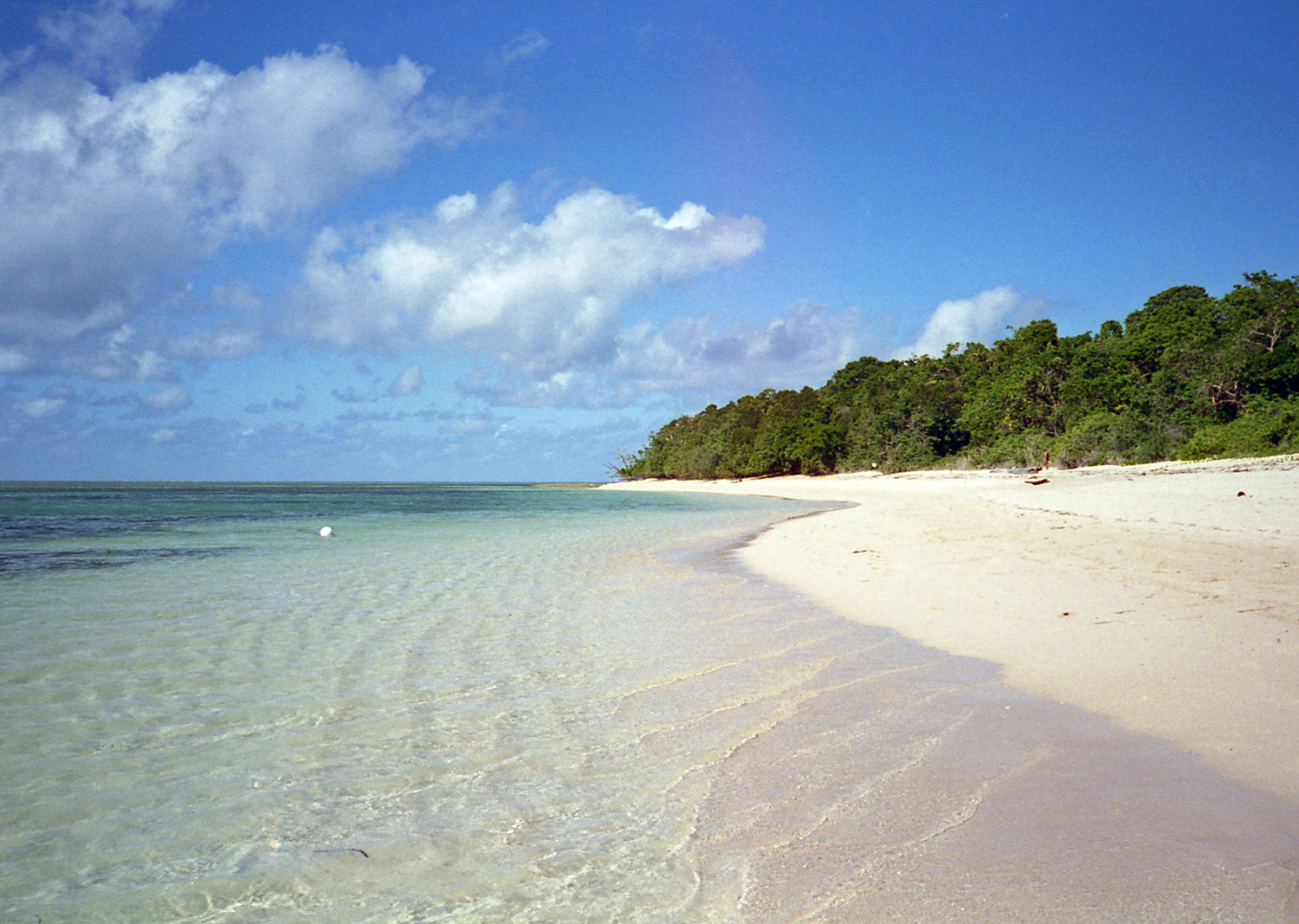 The Barrier Reef and the oceans and atmosphere around it can be regarded as a common resource. The warming of the atmosphere and the oceans, and the destruction of the reef and the wildlife on it, are examples of the ‘tragedy of the commons’. With no-one owning these resources, they are likely to be overused and abused. Put another way, these activities cause negative externalities, which do not appear as costs to the polluters and despoilers, but are still costs to all who treasure the reef. And, from a non-human perspective, it is a cost to the planet and its biodiversity. What is in the private interests of the abusers is not in the social or environmental interest.
The Barrier Reef and the oceans and atmosphere around it can be regarded as a common resource. The warming of the atmosphere and the oceans, and the destruction of the reef and the wildlife on it, are examples of the ‘tragedy of the commons’. With no-one owning these resources, they are likely to be overused and abused. Put another way, these activities cause negative externalities, which do not appear as costs to the polluters and despoilers, but are still costs to all who treasure the reef. And, from a non-human perspective, it is a cost to the planet and its biodiversity. What is in the private interests of the abusers is not in the social or environmental interest.
The Australian government had sought to downplay the extent of the problem, afraid of deterring tourists – a valuable source of revenue – and under pressure from the coal and farming industries. Nevertheless, in the run-up to the election, the destruction of the Reef and what to do about it became a major debating point between the parties.
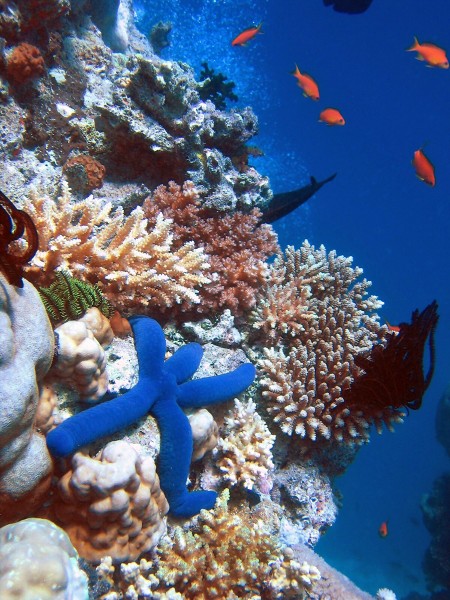 The Coalition government has pledged A$1bn for a new Reef fund, which will be dedicated to tackling climate change and water quality.
The Coalition government has pledged A$1bn for a new Reef fund, which will be dedicated to tackling climate change and water quality.
The fund will also help coastal sewage treatment plants to reduce ocean outfalls with efficient pumps, biogas electricity generation and next-generation waste water treatment. Improving water quality will enhance the Reef’s resilience to climate change, coral bleaching and outbreaks of the destructive crown of thorns starfish.
But how much difference the fund can make with the money it will have is not clear.
The Labor Party pledged to follow every recommendation in the Great Barrier Reef Water Science Taskforce’s Final Report, released in May, and to pass laws to prevent farm pollution flowing into the waters around the Reef and to have a more rapid shift towards renewable energy.
The Green Party goes the furthest. In addition to the Labor Party’s proposals, it wants to impose taxes on coal firms equal to the cost of the damage they are causing. The tax revenues would be paid into a multi-billion dollar fund. This would then be spent on measures to rescue the Reef, invest in clean energy projects, stop damaging industrial development, improve farm management and stop polluted run-off into the Reef catchment area by investing in water systems.
Promises at the time of an election are all well and good. Just how much will be done by the re-elected Coalition government remains to be seen.
Interactive Videos and presentations
 David Attenborough’s Great Barrier Reef: an Interactive Journey, Atlantic Productions, David Attenborough (2015)
David Attenborough’s Great Barrier Reef: an Interactive Journey, Atlantic Productions, David Attenborough (2015)
 Global Warming – the greatest market failure Prezi, Yvonne Cheng (5/12/12)
Global Warming – the greatest market failure Prezi, Yvonne Cheng (5/12/12)
Articles
The Great Barrier Reef: a catastrophe laid bare The Guardian, Michael Slezak (7/6/16)
The Guardian view on the Great Barrier Reef: the crisis they prefer to downplay The Guardian (7/6/16)
Fight to save Great Barrier Reef could cost billions, secret government modelling estimates ABC News, Mark Willacy (2/6/16)
Great Barrier Reef: government must choose which parts to save, says expert The Guardian, Joshua Robertson (8/7/16)
This election, what hope is there for the Great Barrier Reef? The Guardian, Michael Slezak (1/7/16)
Coalition will protect Great Barrier Reef with $1bn fund, says PM The Guardian, Gareth Hutchens (12/6/16)
Great Barrier Reef election explainer: how do the parties compare? The Guardian, Michael Slezak (2/6/16)
Five things we can do right now to save the Great Barrier Reef The Guardian, John Pandolfi (13/6/16)
We’ve scored the parties on the Reef My Sunshine Coast, Australian Marine Conservation Society (29/6/16)
Our Most Iconic Places Are Under Dire Threat From Climate Change Huffington Post, Nick Visser (26/5/16)
There are bright spots among the world’s coral reefs – the challenge is to learn from them The Conversation, Australia, Joshua Cinner (21/7/16)
Questions
- Explain what is meant by the Tragedy of the Commons. Is all pollution damage an example of this?
- What can the Australian government do to internalise the external costs to the Great Barrier Reef from (a) farming; (b) mining; (c) global warming?
- Why is it difficult to reach international agreement on tackling climte change? What insights can game theory provide for understanding the difficulties?
- What are the recommendations in the Final Report of the Great Barrier Reef Water Science Taskforce? What mix of tools does it suggest?
- What are the relative advantages and disadvantages of taxation, laws and regulations, public investment, education and international negotiation as policy instruments to protect the Reef?
 We rely on the natural environment as a source of food and raw materials, for recreation and health and as a dump for waste. Yet, too often, little or no monetary value is placed on the environment. GDP, the standard measure of economic success, is based on market values; and the market undervalues the environment. The prices of the goods we buy bear little relationship with the environmental costs of their production. And yet we all bear the costs (some more than others) as the planet warms, as rain forests are cut down, as seas become polluted and as biodiversity is destroyed.
We rely on the natural environment as a source of food and raw materials, for recreation and health and as a dump for waste. Yet, too often, little or no monetary value is placed on the environment. GDP, the standard measure of economic success, is based on market values; and the market undervalues the environment. The prices of the goods we buy bear little relationship with the environmental costs of their production. And yet we all bear the costs (some more than others) as the planet warms, as rain forests are cut down, as seas become polluted and as biodiversity is destroyed.Moreover, aspects of Nature are mobile; some are invisible, such as in the soils; and many are silent. These features mean that the effects of many of our actions on ourselves and others – including our descendants – are hard to trace and go unaccounted for, giving rise to widespread ‘externalities’ and making it hard for markets to function well.
 Change our measures of economic success to guide us on a more sustainable path. This would involve amending measures, such as GDP, to include environmental degradation (-ve) and improvement (+ve) and national wealth to include all natural assets, such as biodiversity and land, air, sea and water quality. This would involve ‘natural capital accounting’. This, in turn, would be helped by global standardised presentation of data and modelling approaches, and the provision of data on the environment by statistical agencies.
Change our measures of economic success to guide us on a more sustainable path. This would involve amending measures, such as GDP, to include environmental degradation (-ve) and improvement (+ve) and national wealth to include all natural assets, such as biodiversity and land, air, sea and water quality. This would involve ‘natural capital accounting’. This, in turn, would be helped by global standardised presentation of data and modelling approaches, and the provision of data on the environment by statistical agencies. As Sir David Attenborough states in his foreword to the Review,
As Sir David Attenborough states in his foreword to the Review,  Each week, BBC Radio 4 broadcasts readings from a book serialised in five 15-minute episodes. In the week beginning 18 January 2021,
Each week, BBC Radio 4 broadcasts readings from a book serialised in five 15-minute episodes. In the week beginning 18 January 2021, 
 At the annual World Economic Forum (WEF) in Davos, Switzerland, world political and business leaders are meeting to discuss pressing economic issues of the day. This year,
At the annual World Economic Forum (WEF) in Davos, Switzerland, world political and business leaders are meeting to discuss pressing economic issues of the day. This year,  At his speech at the WEF, President Trump said that he supported the initiative to plant
At his speech at the WEF, President Trump said that he supported the initiative to plant  The year starts with climate being addressed at Davos; it ends with the annual Conference of the Parties (
The year starts with climate being addressed at Davos; it ends with the annual Conference of the Parties ( But there remains the fundamental economic problem of the tragedy of the commons. As long as the atmosphere and other parts of the environment are free to ‘use’ to pollute, and as long as the costs of doing so are borne largely by people other than the direct polluters, the market will fail to provide a solution. Australia’s bush fires can be directly attributed to climate change and climate change is exacerbated by coal-fired power stations. But Australia’s use of coal as a power source is only a tiny contributor to global climate change. Presumably, the Australian government would rather get a ‘free ride’ off other countries’ policies to cut emissions rather than bearing the economic cost of reducing coal-fired generation itself for little gain in terms of reduced global emissions.
But there remains the fundamental economic problem of the tragedy of the commons. As long as the atmosphere and other parts of the environment are free to ‘use’ to pollute, and as long as the costs of doing so are borne largely by people other than the direct polluters, the market will fail to provide a solution. Australia’s bush fires can be directly attributed to climate change and climate change is exacerbated by coal-fired power stations. But Australia’s use of coal as a power source is only a tiny contributor to global climate change. Presumably, the Australian government would rather get a ‘free ride’ off other countries’ policies to cut emissions rather than bearing the economic cost of reducing coal-fired generation itself for little gain in terms of reduced global emissions. There is increasing recognition that the world is facing a climate emergency. Concerns are growing about the damaging effects of global warming on weather patterns, with increasing droughts, forest fires, floods and hurricanes. Ice sheets are melting and glaciers retreating, with consequent rising sea levels. Habitats and livelihoods are being destroyed. And many of the effects seem to be occurring more rapidly than had previously been expected.
There is increasing recognition that the world is facing a climate emergency. Concerns are growing about the damaging effects of global warming on weather patterns, with increasing droughts, forest fires, floods and hurricanes. Ice sheets are melting and glaciers retreating, with consequent rising sea levels. Habitats and livelihoods are being destroyed. And many of the effects seem to be occurring more rapidly than had previously been expected. Part of the solution is to ‘internalise’ these externalities by imposing charges on people and firms for their emissions, such as imposing higher taxes on cars with high exhaust emissions or on coal-fired power stations. This can be done through the tax system, with ‘green’ taxes and charges. Economists study the effectiveness of these and how much they are likely to change people’s behaviour.
Part of the solution is to ‘internalise’ these externalities by imposing charges on people and firms for their emissions, such as imposing higher taxes on cars with high exhaust emissions or on coal-fired power stations. This can be done through the tax system, with ‘green’ taxes and charges. Economists study the effectiveness of these and how much they are likely to change people’s behaviour. 

